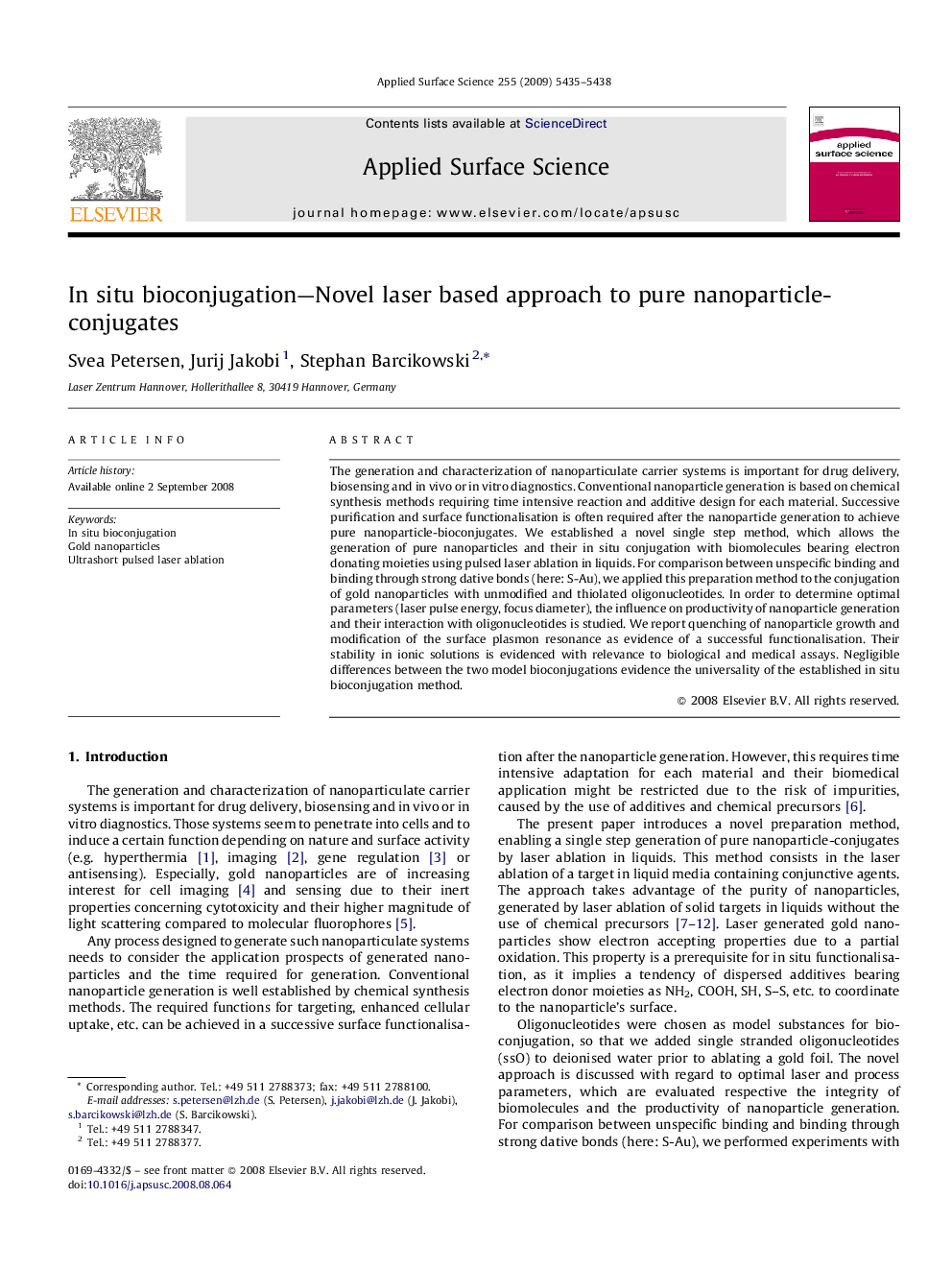| Article ID | Journal | Published Year | Pages | File Type |
|---|---|---|---|---|
| 5367575 | Applied Surface Science | 2009 | 4 Pages |
The generation and characterization of nanoparticulate carrier systems is important for drug delivery, biosensing and in vivo or in vitro diagnostics. Conventional nanoparticle generation is based on chemical synthesis methods requiring time intensive reaction and additive design for each material. Successive purification and surface functionalisation is often required after the nanoparticle generation to achieve pure nanoparticle-bioconjugates. We established a novel single step method, which allows the generation of pure nanoparticles and their in situ conjugation with biomolecules bearing electron donating moieties using pulsed laser ablation in liquids. For comparison between unspecific binding and binding through strong dative bonds (here: S-Au), we applied this preparation method to the conjugation of gold nanoparticles with unmodified and thiolated oligonucleotides. In order to determine optimal parameters (laser pulse energy, focus diameter), the influence on productivity of nanoparticle generation and their interaction with oligonucleotides is studied. We report quenching of nanoparticle growth and modification of the surface plasmon resonance as evidence of a successful functionalisation. Their stability in ionic solutions is evidenced with relevance to biological and medical assays. Negligible differences between the two model bioconjugations evidence the universality of the established in situ bioconjugation method.
